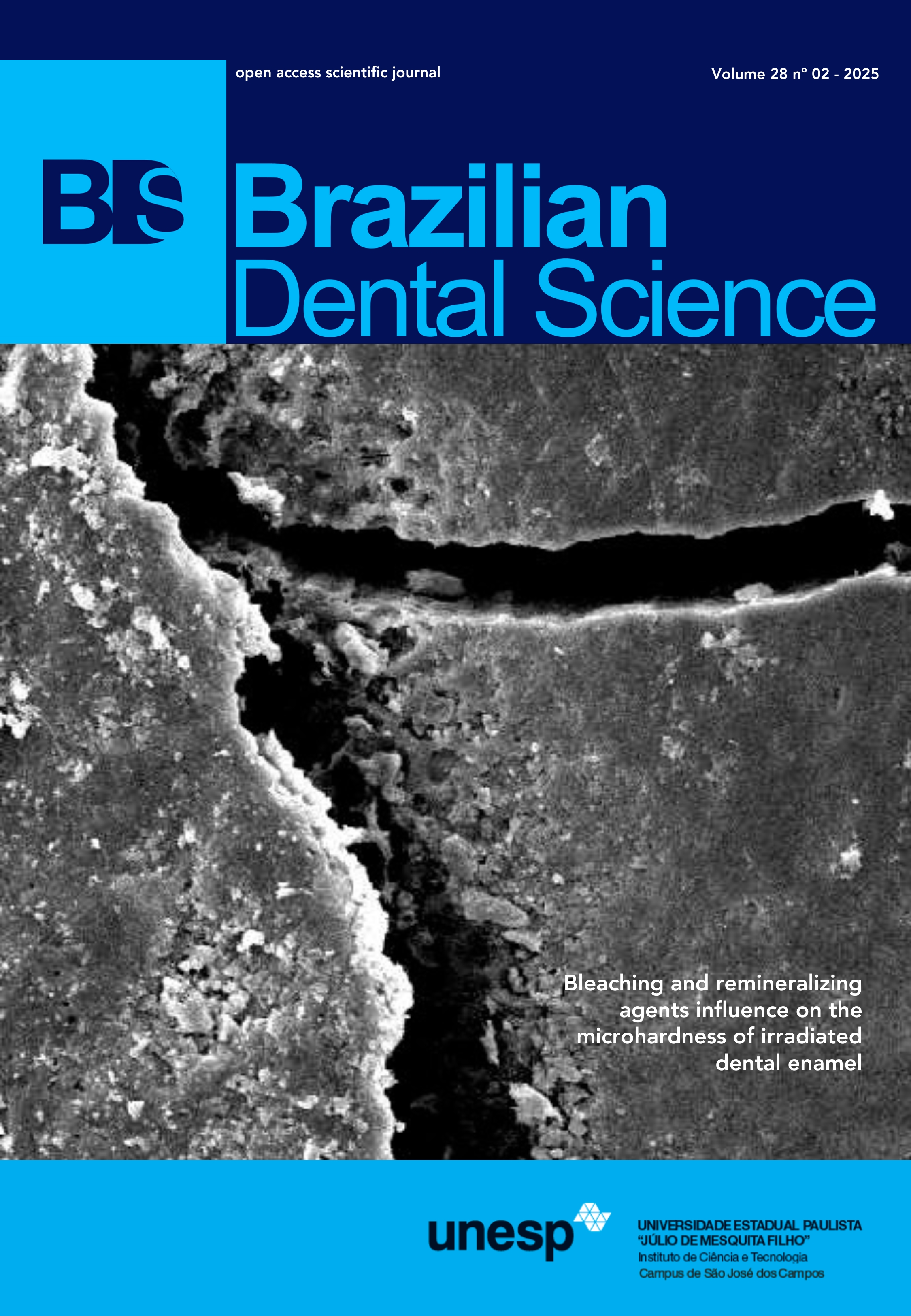Cemento-ossifying fibroma with aneurysmal bone cyst-like cystic hemorrhagic degeneration in the mandible: a case report and literature review
DOI:
https://doi.org/10.4322/bds.2025.e4680Abstract
Although rare, the aneurysmal bone cyst remains the most frequently associated lesion with cemento-ossifying fibroma in jawbones, with a higher prevalence in young people in their second decade of life. Nowadays, the concept of a secondary aneurysmal bone cyst has been replaced by that of cystic hemorrhagic degeneration, producing an aneurysmal bone cyst-like appearance in the fibro-osseous lesion. Objective: This study aims to report an uncommon case of cemento-ossifying fibroma associated with aneurysmal bone cyst-like cystic hemorrhagic degeneration in the mandible of a middle-aged woman and to review its clinical, imaging and histopathological features. Case report: A 44-year-old Caucasian woman was referred for evaluation of a painless, slow-growing swelling in the region of teeth 33, 34, and 35, which presented normal pulpal vitality. Cone-beam computed tomography revealed a periapical hypodense area with hyperdense foci involving the roots of the affected teeth, associated with the expansion and rupture of the buccal cortical bone. The diagnosis established was cementoossifying fibroma with aneurysmal bone cyst-like cystic hemorrhagic degeneration. Conclusion: The cementoossifying fibroma associated with aneurysmal bone cyst-like cystic hemorrhagic degeneration, as described in this case, is uncommon in the jawbones. The correlation of clinical, imaging, and microscopic features is crucial for an accurate diagnosis.
KEYWORDS
Aneurysmal bone cyst; Cemento-ossifying fibroma; Fibro-osseous lesion; Odontogenic tumor; Ossifying fibroma.
Downloads
Downloads
Published
How to Cite
Issue
Section
License
Brazilian Dental Science uses the Creative Commons (CC-BY 4.0) license, thus preserving the integrity of articles in an open access environment. The journal allows the author to retain publishing rights without restrictions.
=================




























